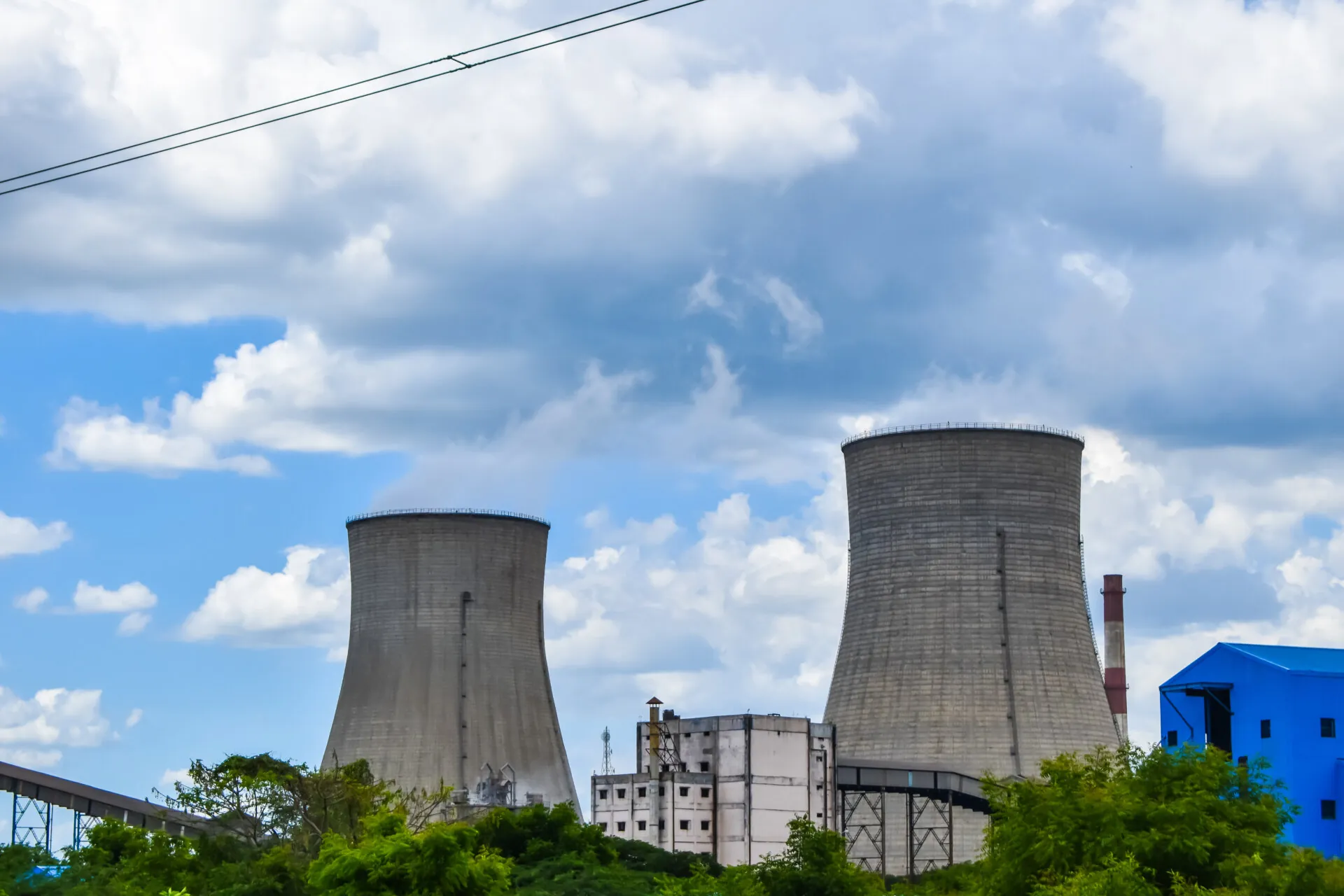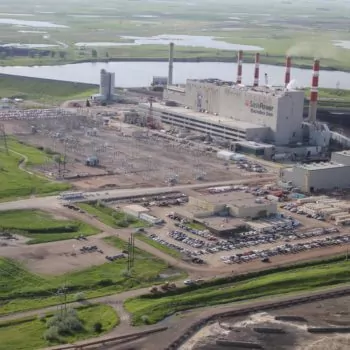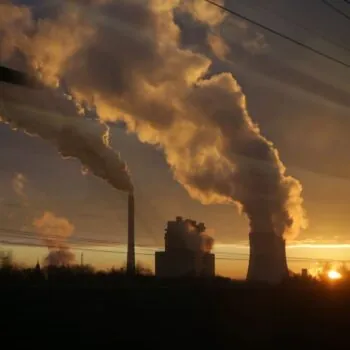Welcome to the E3G G20 Coal Transition Progress Tracker. This is part of E3G’s ongoing work to provide an accessible analysis of the country-by-country coal landscape. You can find our tracker on OECD coal phase-out here.
Keeping the world on track for a below-1.5°C pathway requires the rapid retirement of the global coal fleet. IEA analysis is clear that this means all OECD countries must have exited coal by 2030, with the rest of the world achieving the same by 2040. United Nations Secretary General Guterres has called for governments to respond to these phase-out timelines as part of his Acceleration Agenda, starting with an immediate commitment to no new coal power plants.
This interactive tool aims to capture progress toward coal phase-out in the G20, as countries move rapidly toward a coal-free future, including:
- Coal phase-out commitments.
- Coal’s share of electricity generation.
- Data on existing, planned and cancelled coal capacity (in GW).
You will find ‘coal-free’ countries at the top, with laggards that are still considering new coal power projects at the bottom. Countries are then ordered by their intended year of phase-out commitment.
Note: The first edition of the G20 Tracker (6 July 2023) is generated using data gathered by the Global Energy Monitor (GEM) for the full year of 2022, along with adjustments made by E3G reflecting new coal developments in the world outside of China during the first half of 2023. An updated data set will be released by GEM during July 2023, which will then be integrated into an updated version of the Tracker.
At COP26, all governments agreed to ‘accelerating efforts towards the phase down of unabated coal power’, as a step towards meeting net zero goals. Currently, less than one-third of the total coal capacity in G20 countries is slated for retirement by 2030, relative to 2010 levels. This highlights an urgent need for these nations to enhance their commitment towards an expedited shift from coal to cleaner energy alternatives.
To date, only a select few G20 countries have made commitments to phase out coal by a set date. Among these, five nations have committed to coal phase-out dates before 2030, and Germany is contemplating joining this timeline. Meanwhile, the EU, USA, and South Korea have made partial moves towards coal phase-out strategies. However, there are still eleven countries within the G20 that have not yet taken specific steps to define intended timeframes for coal phase down / out measures.
G20 countries are home to 88% of the remaining global proposals (‘pre-construction’) for new coal power capacity, with wide variation in the planned capacities among nations. As of the end of 2022, China was home to 250GW (72%), with the rest of the G20 home to 55GW (16%), as shown in Figure 1 below.
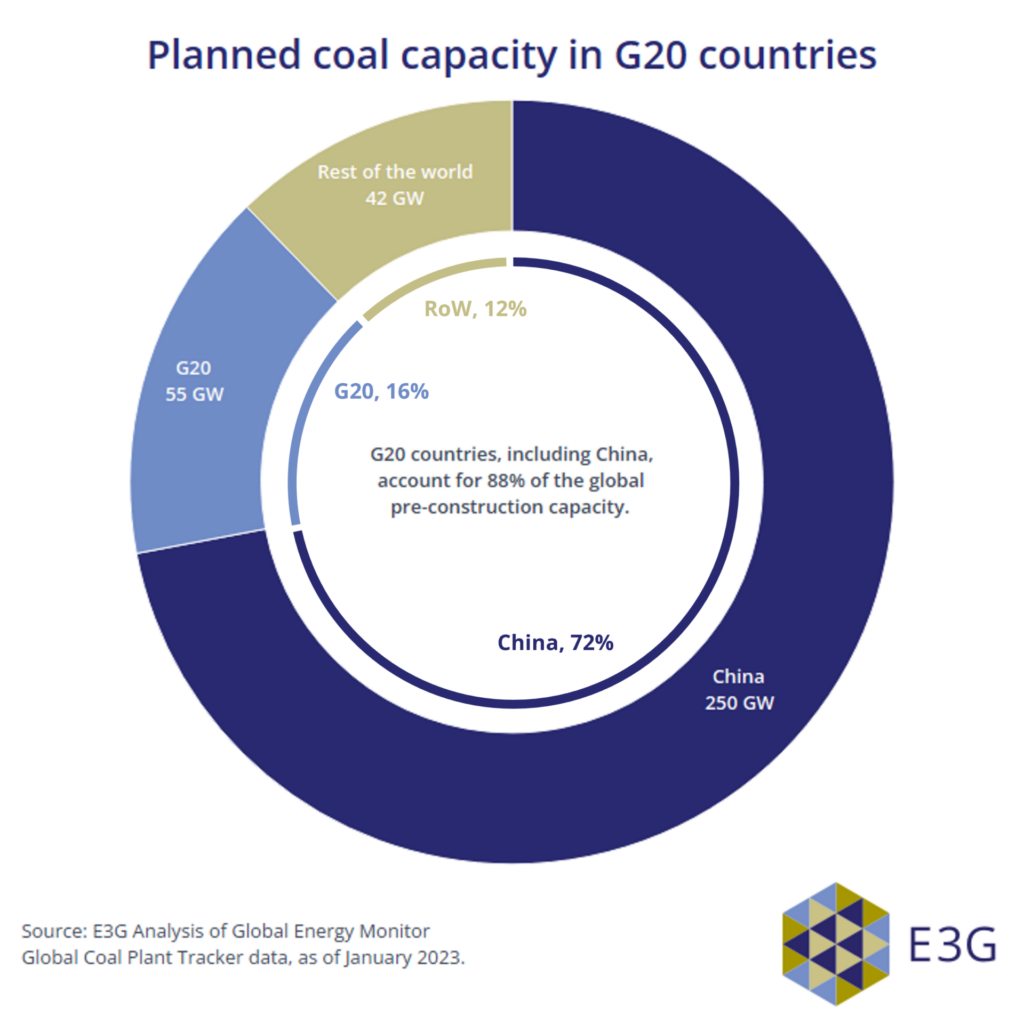
Our March 2023 analysis of the 2022 data found that there was an unprecedented increase in China’s pre-construction capacity in the second half of 2022, despite President Xi’s pledge that China would “strictly control” coal. This accompanied significant spikes in new project proposals and construction starts. A continued surge in new coal construction would see China taking a costly detour that would load its economy with stranded assets, undermine its global leadership on renewables deployment, and challenge the credibility of its climate commitments.
China’s continued pursuit of new coal construction differs from the global trend away from new coal, with the Rest of the World now totalling under 100GW of proposed capacity. The latest interim data showed that India is home to more than half of the total pre-construction capacity proposed across G20 members beyond China, as shown in Figure 2 below.
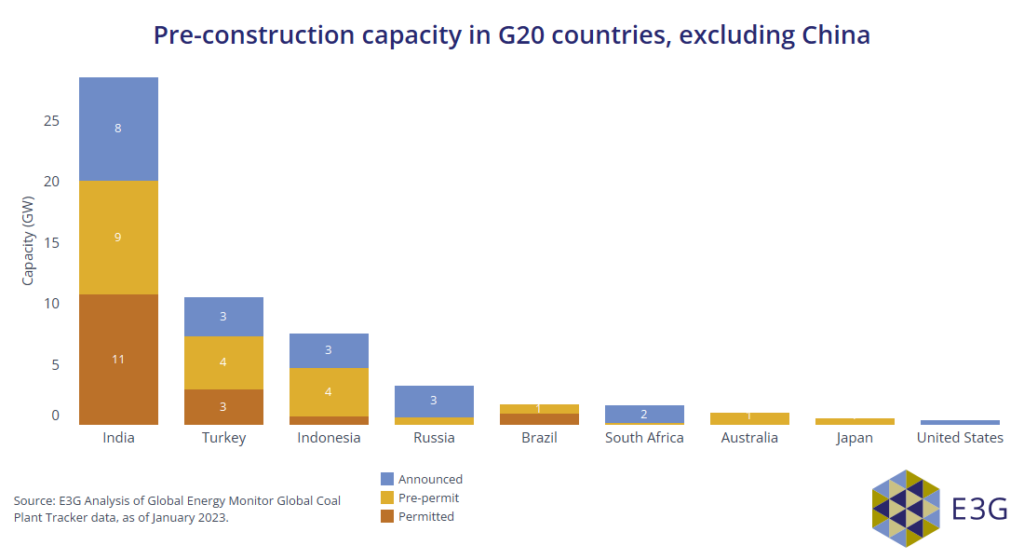
However multiple projects in India have been paused over recent years, including some projects halted mid-construction. Recent analysis from India’s Central Electricity Authority suggests that no further new coal construction may be required in the period to 2027, beyond those projects already under construction. As the current G20 Presidency, India has a significant opportunity to demonstrate climate leadership by accelerating clean energy growth and fulfilling its existing renewables targets.
In May 2023, the G7 countries collectively called for an end to new coal construction globally. This significant agreement could pave the way for the G20 to also make a decisive declaration, echoing the G7’s move in their shared ambition for a clean transition.

